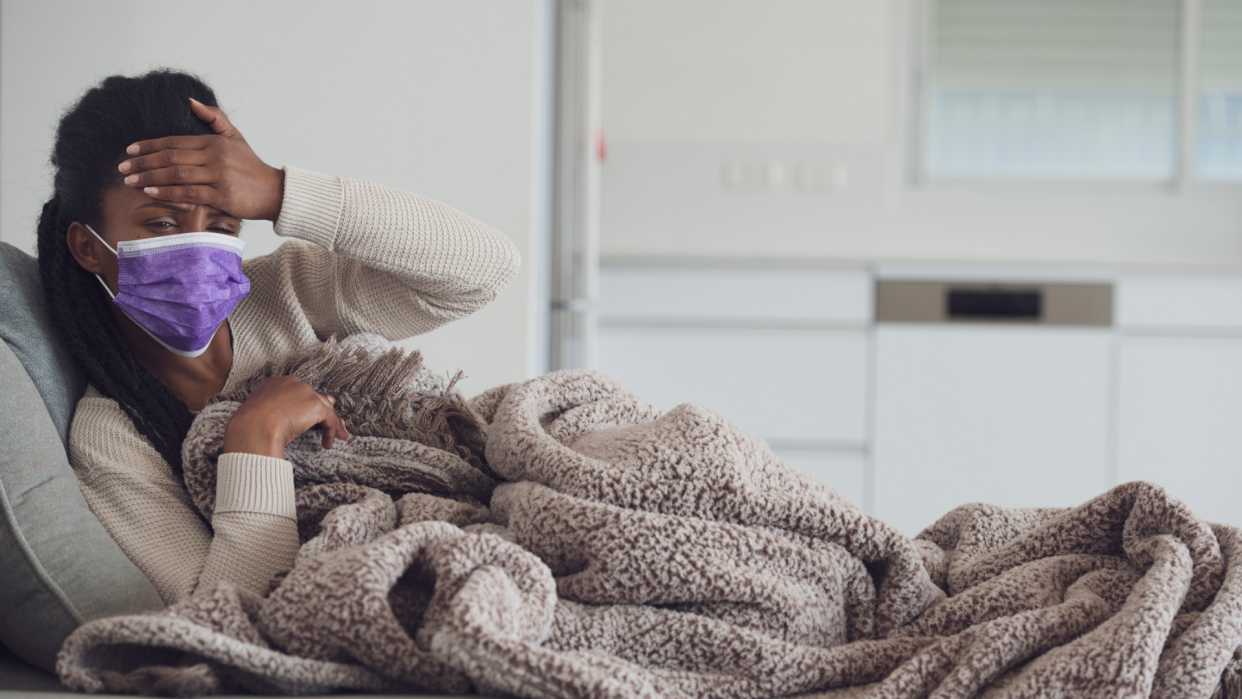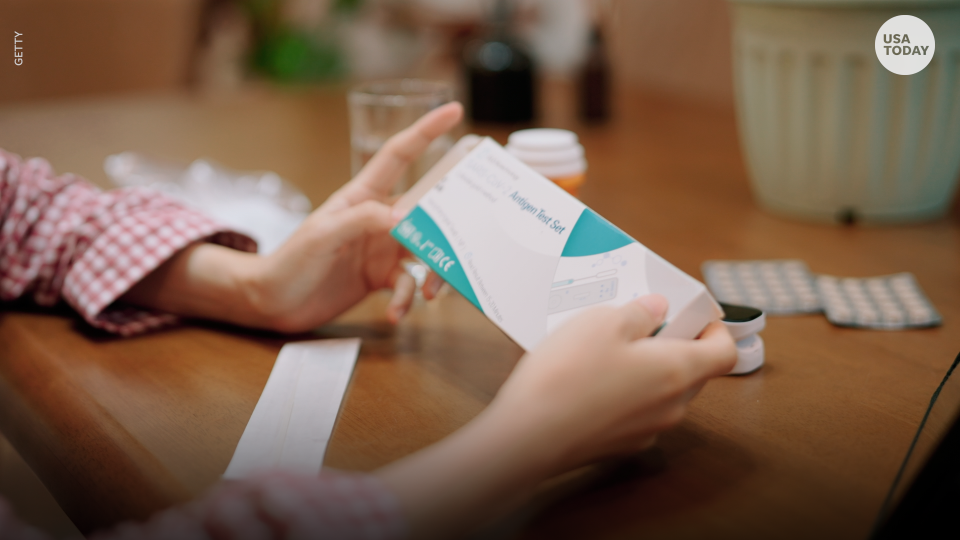Can you avoid COVID-19 if a household member has it? Here's how to decrease your risk

— Recommendations are independently chosen by Reviewed’s editors. Purchases you make through our links may earn us a commission.
Many of us have received that dreaded phone call or text from a close contact containing the words, "I tested positive for COVID-19." With this new information comes a lot of questions—does our entire household need to quarantine? Do we all need to get tested? Do I also have COVID-19?
Get deals and shopping advice delivered straight to your phone. Sign up for text message alerts from the experts at Reviewed.
This is a common scenario for households across the country as the omicron variant of COVID-19 continues to spread. And while cases are on the decline, especially in areas like the Northeast which were hit hard by the post-holiday surge, Dr. Anthony Fauci doesn't expect COVID-19 cases to peak nationally until mid-February.
If someone in your household tests positive for COVID-19, here are the answers to some of the most common questions and concerns.
►Related: Pfizer and BioNTech announce plans to test omicron-specific COVID-19 vaccine in adult trials
Can you avoid contracting COVID-19 from a household member?
The answer isn't so black and white, since it can depend on your household's unique situation.
While household members are at heightened risk of contracting COVID-19, whether or not you test positive yourself may depend on vaccination status, ability to socially distance, if you’re sharing items or using the same surfaces and when and how shared spaces are cleaned, among other factors.
The CDC says it's important to remain apart as much as possible from any household members that test positive for COVID-19. There will be ongoing exposure until that person is no longer infectious, so there are precautions you'll need to take in this situation.
How long are you contagious with COVID-19?
Wondering how long you'll have to distance yourself and uphold proper precautions in your household? The CDC says those with a mild-to-moderate COVID-19 infection remain infectious no longer than 10 days after symptom onset.
Those with a more severe infection, on the other hand, likely remain infectious no longer than 20 days after symptom onset.
Keep in mind that those who have recovered from COVID-19 can still test positive for up to three months post-infection since they can have detectable SARS-CoV-2 RNA remaining in their body. These individuals do not remain contagious for that time, though.
How to keep yourself safe when someone in the home tests positive
Depending on vaccination status, quarantine or isolate

If you aren't up to date with your COVID-19 vaccines, you should quarantine if someone in your household has COVID-19, to avoid being continuously exposed to the virus, per the CDC's current guidelines.
Breakthrough infections are possible in vaccinated individuals, especially with the contagious omicron variant. Regardless of vaccination status, if you feel sick you or test positive for COVID-19 (even if you're asymptomatic), you should isolate yourself by keeping your distance from household members, staying home and taking extra precautions like wearing a mask around others and avoiding travel until your isolation period ends.
According to the CDC's recently updated isolation guidelines, you should isolate for five days—if you are asymptomatic or your symptoms are resolving (without fever for 24 hours), you can end your isolation but should continue to wear a mask around others for another five days.
►More: COVID quarantine and isolation guide: What to know and what to have at home
Take an at-home COVID-19 test or get tested at a site near you

An important tool in identifying positive COVID-19 cases is getting tested. Continue to monitor your symptoms and perform serial testing (or repeat testing every few days) to confirm if you have or haven't contracted the virus. You can currently order free at-home COVID-19 tests from the U.S. government, but if you need a test as soon as possible, you can find at-home test kits online or in-store from major retailers and pharmacies. You can also get COVID-19 tests at no cost or can get your purchases reimbursed through your insurer, thanks to a new policy.
Get the iHealth COVID-19 Antigen Rapid Test from Amazon for $17.98
Get the BinaxNOW COVID-19 Antigen Self Test from Walmart for $19.88
Wear masks in the household

If someone in your household has COVID-19, everyone should wear a well-fitted mask inside the home, according to the CDC. N95 and KN95 masks offer top protection and filtration, so opt for these masks if possible. If there are children in your household, there are protective KN95 options available for them, too. Free N95 masks provided by the Biden administration are currently en route to local pharmacies and retailers like Costco, Hy-Vee, Walgreens and other major retailers.
Get the 3M N95 Particulate Respirator (NIOSH-approved), 20-pack from Amazon for $26
Get the Powecom KN95 Respirator Face Mask (10-Pack) from Bona Fide Masks for $12
Get the N95 Medical Respirator Mask (NIOSH-Approved) from WellBefore From $1.59/each
Clean and disinfect the home often

If possible, try to keep a separate bedroom and bathroom for a person who is sick. If separation isn't possible, the household member infected with COVID-19 should clean and disinfect surfaces and items after each use.
If your sick household member isn't well enough to clean themselves, have another household member don a mask, wear gloves and begin cleaning and disinfecting when necessary. The CDC says you don't have to clean a shared room every time after the infected individual uses it—this could increase your contact with potentially infected items or surfaces. You can use disinfecting wipes for a quick and easy clean-up. Make sure to wash your hands afterward,
Try to keep these shared rooms ventilated, too, if possible. We're in the middle of winter, and some areas may be too chilly for this, so an alternative is using your heating and HVAC systems to increase air circulation.
Get the Lysol Disinfecting Wipes (Pack of 4) from Amazon for $12.47
Get the Lysol Disinfectant Spray from Amazon (Pack of 2) for $11.99
Limit care for the person with COVID-19 to one household member
If someone else in the household needs to care for the person with COVID-19, try to keep it to one point person. The more people that interact with the infected individual, the more likely spread in the household can happen.
There’s a lot more where this came from. Sign up for our twice-weekly newsletter to get all our reviews, expert advice, deals and more.
The product experts at Reviewed have all your shopping needs covered. Follow Reviewed on Facebook, Twitter, Instagram, TikTok or Flipboard for the latest deals, product reviews and more.
Prices were accurate at the time this article was published but may change over time.
This article originally appeared on Reviewed: Does someone in your home have COVID-19? Wear masks, get tested and other precautions to take

 Yahoo Movies
Yahoo Movies 
